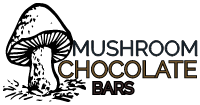Psilocybe allenii
$35.00 – $115.00
Psilocybe allenii was described as new to science in 2012 by Jan Borovička, Alan Rockefeller, and Peter G. Werner. Borovička received material collected from Seattle, Washington, which he noted was microscopically similar to Psilocybe cyanescens, but lacked the wavy cap margins characteristic of that species.[1] In previous publications,[4][5] Borovička had noted that both macro- and microscopic characters of certain Psilocybe species were highly variable, which could also account for the differences observed in the Seattle material. However, DNA sequencing revealed a 5-base pair change in the internal transcribed spacer regions (a segment of RNA often used in molecular phylogenetics to identify or distinguish fungal species) between P. cyanescens and the Seattle collections. This difference, in addition to the readily observable macroscopic differences, was deemed sufficient to warrant describing the taxon as a new species.[1] Additional molecular studies published by Borovička and colleagues in 2015 identified P. azurescens, P. cyanescens, P. weraroa, P. cubensis, and P. serbica as closely related to P. allenii.[2]
For several years before its official description, the taxon was known in the San Francisco Bay Area, and suspected of being an undescribed species. The authors suggest that a color photograph of “P. cyanescens” in David Arora’s popular 1986 guidebook Mushrooms Demystified may actually depict P. allenii.[1] Mycologist Paul Stamets suggested in 2005 that it “probably is new, or least a newly imported species”.[6] It is commonly called “Psilocybe cyanofriscosa” in the online mycological community, but this name is grammatically incorrect Latin and has never been validly published in scientific literature.[1] The specific epithet allenii honors John W. Allen, who collected the original material and provided the impetus for the study. Allen collected the type material from the University of Washington Campus in November 2009.[1] He first collected the fungus in Capitol Hill in 1982, and several times later from Seattle. Some of these collections he sent to Mexican Psilocybe specialist Gastón Guzmán, who initially thought them to be P. cyanescens because of their overlapping spore size ranges.[















Reviews
There are no reviews yet.